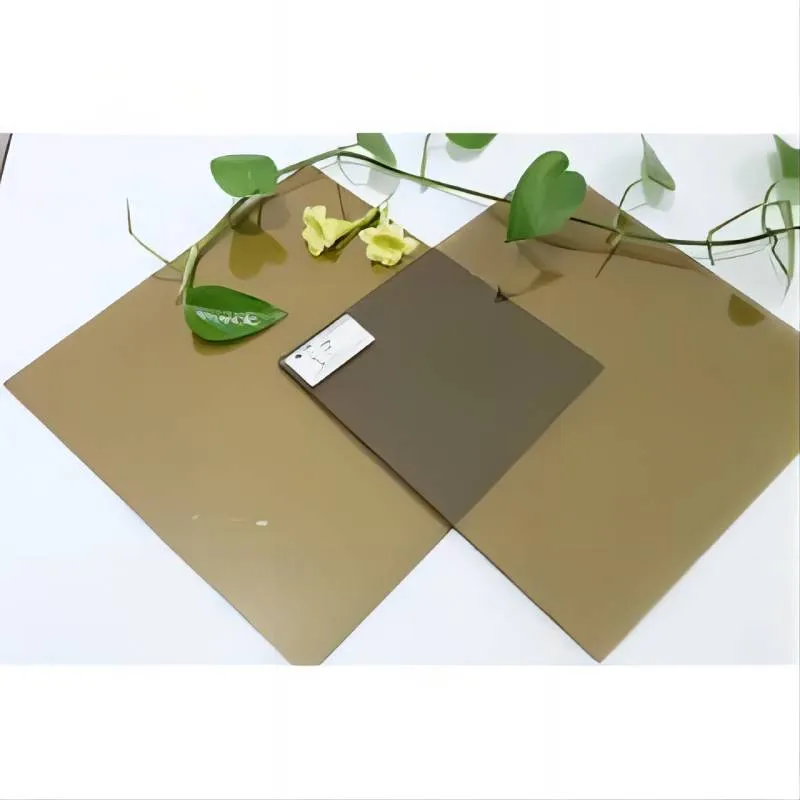The Evolution and Applications of Float Glass Panels
Float glass is a significant innovation in the world of glass manufacturing that has transformed the way we approach architectural design, automotive glazing, and various other applications. Developed in the mid-20th century, this process involves floating molten glass on top of molten tin, allowing it to form a flat, uniform sheet with a smooth surface. The resulting float glass panels have become a cornerstone of modern construction and design, renowned for their clarity, smoothness, and versatility.
Understanding Float Glass Production
The production of float glass begins with the careful mixture of raw materials including silica sand, soda ash, and limestone. These ingredients are melted in a furnace at temperatures exceeding 1,600 degrees Celsius. Once molten, the glass is poured onto a bath of molten tin. Because glass is less dense than tin, it floats on the surface, spreading out to create a flat, even sheet. The floating process guarantees uniform thickness and minimal distortion, making it ideal for applications where clarity is paramount.
When the glass reaches the desired thickness, it is cooled and gradually hardened in a lehr, a type of annealing furnace that reduces internal stresses. This sophisticated manufacturing process results in high-quality float glass panels that can be cut into various sizes, making them suitable for different uses, from windows in buildings to screens in electronic devices.
Applications of Float Glass Panels
1. Architectural Use Float glass panels are widely used in buildings and skyscrapers, thanks to their excellent transparency and aesthetic appeal. They allow natural light to enter while providing insulation and visibility. Modern architectural designs often incorporate large glass facades, which can enhance the visual appeal of a structure while ensuring energy efficiency through thermal insulation properties.
2. Automotive Industry In automobiles, float glass is utilized for windows, windshields, and sunroofs. The clarity and strength of float glass are essential for driver and passenger safety. Additionally, advancements such as laminated glass combine float glass with interlayers for improved sound insulation and UV protection.
float glass panel
3. Interior Design Float glass panels are also popular in interior design, where they can be used in table tops, partitions, and decorative elements. Their sleek appearance lets designers create open, airy spaces without sacrificing privacy or functionality.
4. Electronics and Displays The electronics industry has embraced float glass for its superior optical properties. Screens for smartphones, tablets, and televisions often utilize high-quality float glass for a clear and durable display. Protective layers can also be applied for enhanced resistance to scratches and impacts.
5. Mirrors Float glass panels are often used as the base material for mirrors. By applying a reflective coating to one side of the glass, manufacturers produce mirrors that are clear, durable, and free of distortion.
Environmental Considerations
The float glass manufacturing process does have environmental impacts, primarily due to energy consumption and emissions during production. However, many companies are adopting more sustainable practices, such as recycling glass and using renewable energy sources in their manufacturing processes. Moreover, the longevity and energy efficiency of float glass products contribute positively to environmental sustainability over their lifetimes.
Conclusion
Float glass panels have revolutionized various industries with their elegant appearance, versatility, and functional benefits. From breathtaking architectural designs to essential components in automobiles and electronics, float glass continues to shape how we interact with our environments. As technology and manufacturing processes evolve, the future of float glass promises to be both exciting and sustainable, making it an invaluable material in modern design and construction.
 Afrikaans
Afrikaans  Albanian
Albanian  Amharic
Amharic  Arabic
Arabic  Armenian
Armenian  Azerbaijani
Azerbaijani  Basque
Basque  Belarusian
Belarusian  Bengali
Bengali  Bosnian
Bosnian  Bulgarian
Bulgarian  Catalan
Catalan  Cebuano
Cebuano  Corsican
Corsican  Croatian
Croatian  Czech
Czech  Danish
Danish  Dutch
Dutch  English
English  Esperanto
Esperanto  Estonian
Estonian  Finnish
Finnish  French
French  Frisian
Frisian  Galician
Galician  Georgian
Georgian  German
German  Greek
Greek  Gujarati
Gujarati  Haitian Creole
Haitian Creole  hausa
hausa  hawaiian
hawaiian  Hebrew
Hebrew  Hindi
Hindi  Miao
Miao  Hungarian
Hungarian  Icelandic
Icelandic  igbo
igbo  Indonesian
Indonesian  irish
irish  Italian
Italian  Japanese
Japanese  Javanese
Javanese  Kannada
Kannada  kazakh
kazakh  Khmer
Khmer  Rwandese
Rwandese  Korean
Korean  Kurdish
Kurdish  Kyrgyz
Kyrgyz  Lao
Lao  Latin
Latin  Latvian
Latvian  Lithuanian
Lithuanian  Luxembourgish
Luxembourgish  Macedonian
Macedonian  Malgashi
Malgashi  Malay
Malay  Malayalam
Malayalam  Maltese
Maltese  Maori
Maori  Marathi
Marathi  Mongolian
Mongolian  Myanmar
Myanmar  Nepali
Nepali  Norwegian
Norwegian  Norwegian
Norwegian  Occitan
Occitan  Pashto
Pashto  Persian
Persian  Polish
Polish  Portuguese
Portuguese  Punjabi
Punjabi  Romanian
Romanian  Russian
Russian  Samoan
Samoan  Scottish Gaelic
Scottish Gaelic  Serbian
Serbian  Sesotho
Sesotho  Shona
Shona  Sindhi
Sindhi  Sinhala
Sinhala  Slovak
Slovak  Slovenian
Slovenian  Somali
Somali  Spanish
Spanish  Sundanese
Sundanese  Swahili
Swahili  Swedish
Swedish  Tagalog
Tagalog  Tajik
Tajik  Tamil
Tamil  Tatar
Tatar  Telugu
Telugu  Thai
Thai  Turkish
Turkish  Turkmen
Turkmen  Ukrainian
Ukrainian  Urdu
Urdu  Uighur
Uighur  Uzbek
Uzbek  Vietnamese
Vietnamese  Welsh
Welsh  Bantu
Bantu  Yiddish
Yiddish  Yoruba
Yoruba  Zulu
Zulu 

